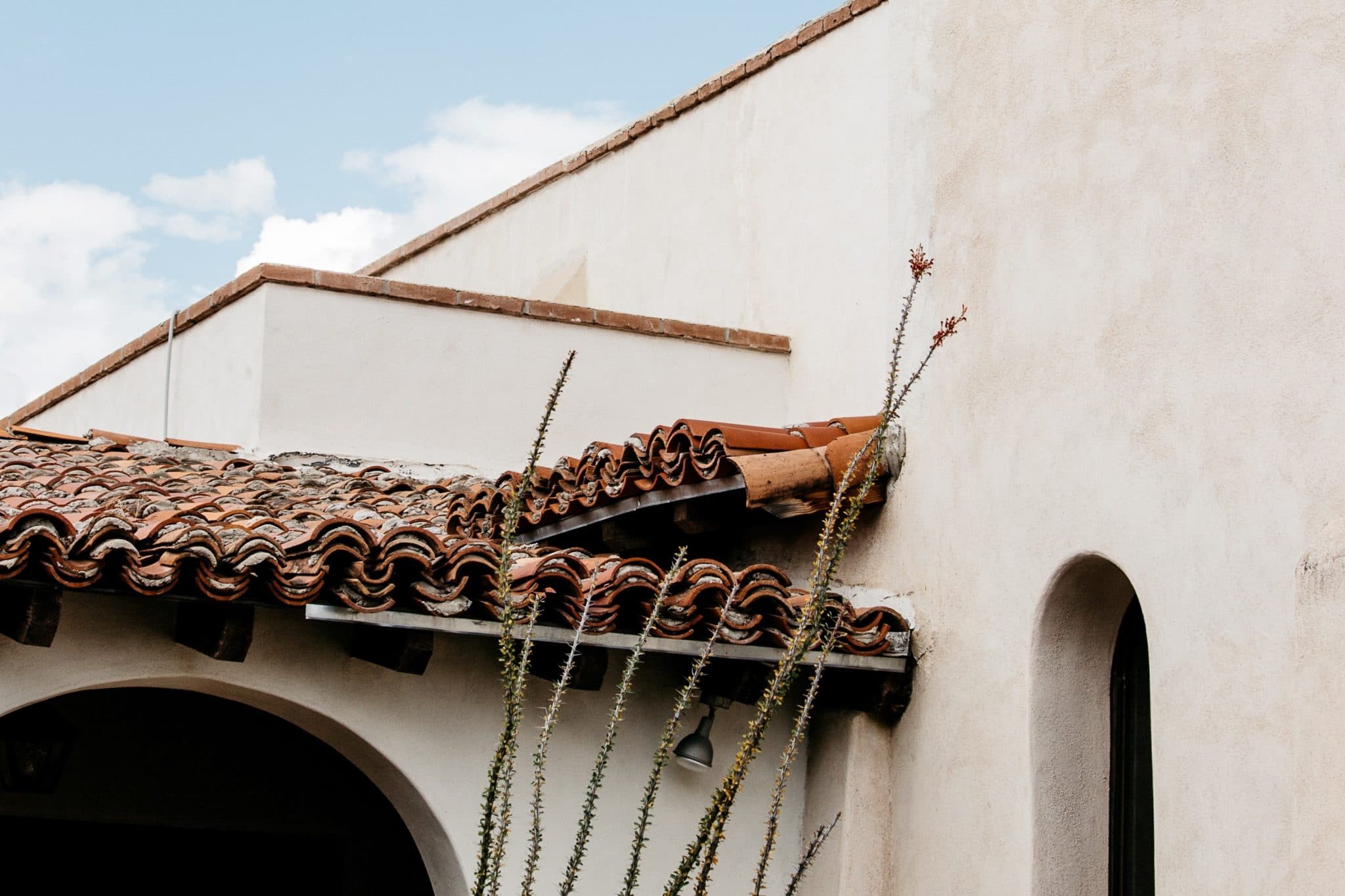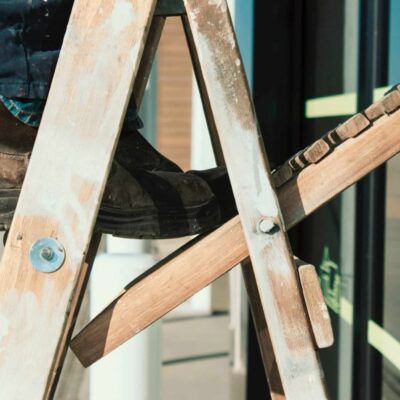Pole Cams: Seeing in the Air While on the Ground
Last Updated December 12, 2023

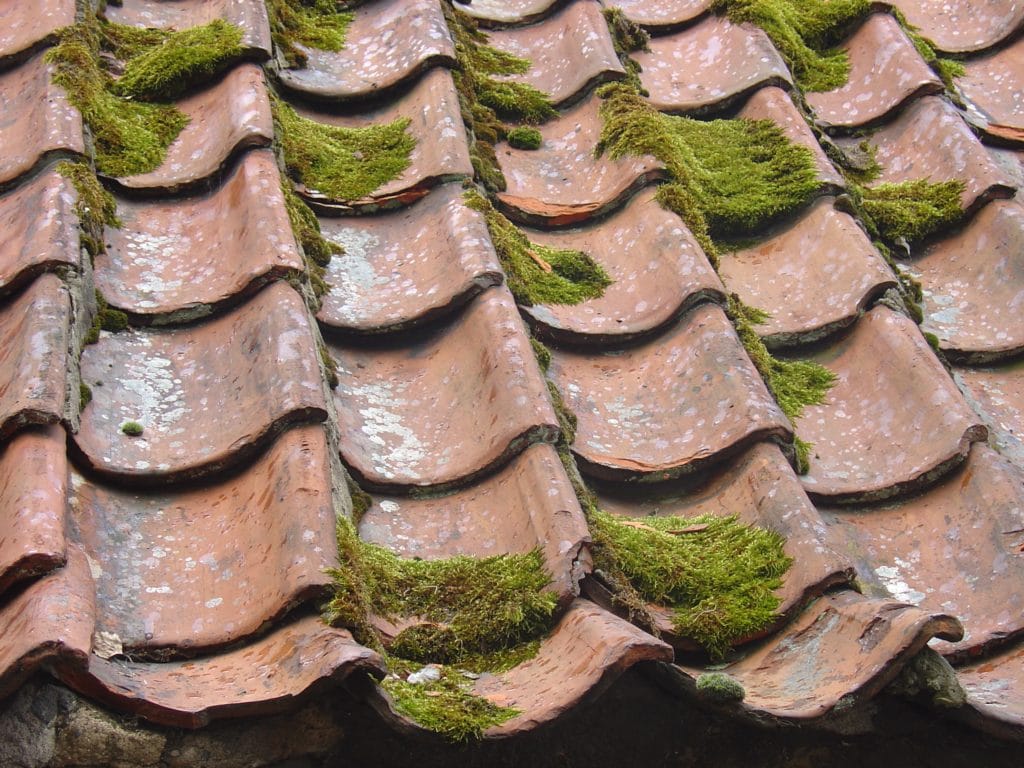 While boots-on-the-roof inspections provide the best examination of roofing materials and integrity, they aren’t always possible. Not all roofs are safe to walk on. Some are too wet, icy, mossy, steep, or high. In other cases, the risk comes from external conditions, such as high winds, storms, or heat. Certain roofing materials, like metal or terra cotta, may be unsafe to traverse without risking hurting the property or yourself.
While boots-on-the-roof inspections provide the best examination of roofing materials and integrity, they aren’t always possible. Not all roofs are safe to walk on. Some are too wet, icy, mossy, steep, or high. In other cases, the risk comes from external conditions, such as high winds, storms, or heat. Certain roofing materials, like metal or terra cotta, may be unsafe to traverse without risking hurting the property or yourself.
Furthermore, you can stay safe and still meet your ASHI Standard of Practice (SOP) by inspecting the roof from another vantage point. In May 2021, we explored whether you should use drones during your home inspections. In this article, we discuss whether pole cams are a good fit for your business.
What are pole cams?
A pole camera is exactly what it sounds like: It’s a camera mounted to a fiberglass, aluminum alloy, or carbon fiber post that allows you to take photos and videos higher than you could reach by simply extending your arms. Most are telescoping, meaning the pole slides into itself to become smaller, thus enabling easier transportation. Many prefabricated pole cams, which you can purchase for $200 or $800, come with camera and tablet attachments. This allows you to mount devices you already own, while others come with cameras.
Looking to save money, some home inspectors opt to build their own pole cams by assembling rods, tripods, and cameras themselves. However, these do-it-yourself models tend to lack the sophistication of ready-for-purchase pole cams, which may hinder visibility or maneuverability.
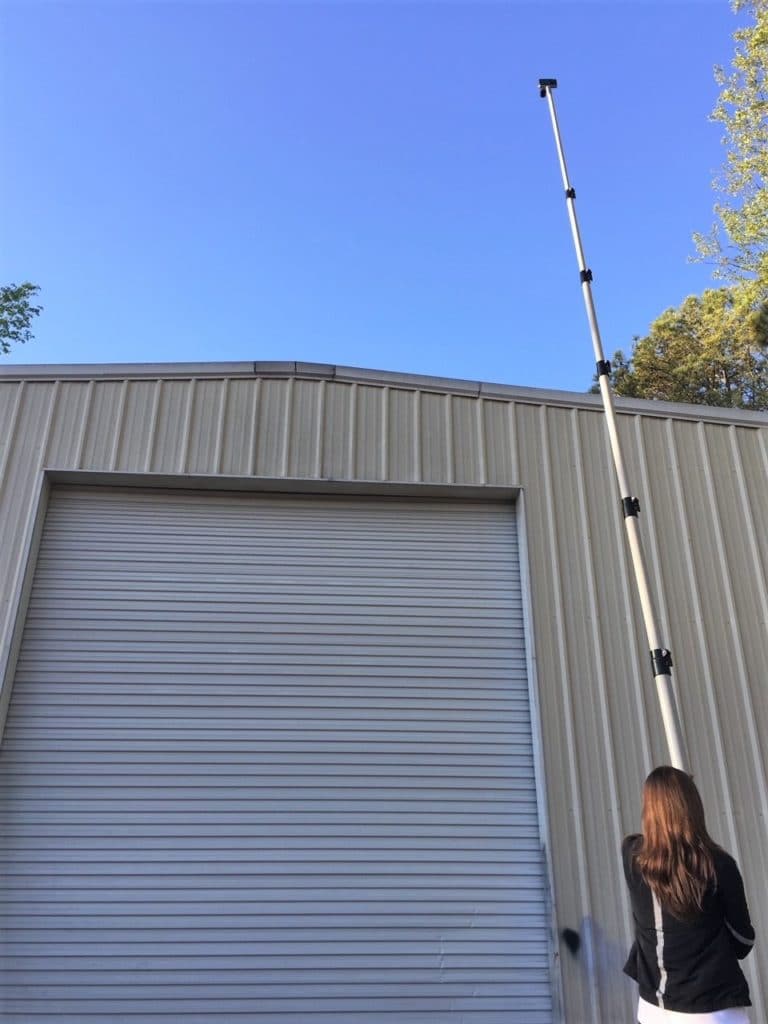
Courtesy of Tony Escamilla of Villa Home Inspections
Why choose pole cams?
In the infancy of the home inspection profession, the go-to substitute for a boots-on-the-roof inspection or an inspection from the ladder at the eaves was binoculars. Higher quality, professional models with the ability to zoom in captured finer details of roof flashing and chimney caps. For this reason, some inspectors continue to use binoculars instead of, or in addition to, other methods. However, binoculars lack one essential characteristic: the ability to take photos.
Still photographs are the bread and butter of an inspector’s claims defense. They provide rich context to written reports and irrefutable evidence for claims handling. So even if you can’t walk on the roof with your camera in hand, it’s important to find another way to capture images.
As we mentioned earlier, drones are one option, but they’re not for everyone. According to Jim Carr of Inspect & Detect Home Inspections in Rhode Island, drones can be expensive and difficult to use. If you aren’t tech savvy, or if you don’t have the time to invest in practicing and training, a drone can be more of a nuisance or liability than an aid. Additionally, environmental factors can make safely maneuvering a drone difficult. In Carr’s experience, pole cams are a great alternative.
“Picture this: You get a drone. You’re not paying attention. The thing whips. The wind catches it, and you hit a neighbor’s kid. It just isn’t worth it,” Carr argued. “[But with a pole cam], I am in full control.”
For Tony Escamilla of Villa Home Inspections in California, his pole cam isn’t a backup for boots-on-the-roof, but rather for his drone. While the weather in his area is usually good for flying, excessive wind, rain, or trees pose limitations for safe drone flight. Escamilla’s pole cam acts as his Plan C.
Limiting Your Liability
When it comes to pole cams, limiting your liability happens in three ways: getting on the roof when it’s safe, communicating clearly, and insuring your equipment. We discuss each in more detail below.
Get on the roof whenever you can.
Like we said, getting on the roof provides the best insights into its condition. The ability to use additional senses like touch enables inspectors to better diagnose defects.
“If you have weak sheathing or something like that, when I walk on it, I can feel it,” said Jud Faust of Liberty Inspections. “I may be able to see [a potential issue], but until I can get up there and touch it and feel it, I don’t know if it’s an actual defect I need to call out.”
Faust also said walking on the roof can help him determine areas of interest during the attic inspection. Say, for example, a portion of the roof feels weaker than other areas. Then he knows to pay special attention to that area in the attic.
Pole cams are not a one-size-fits-all solution. Just like all the tools in your kit, there are times to use a pole cam, and then there are times to get your boots on the roof.
Set your clients’ expectations.
Make sure your clients understand pole cams’ limitations. In your inspection report, explain what a pole cam realistically can and cannot see. By setting expectations in writing, inspectors can decrease the likelihood of pole-cam-related claims and make such claims more defensible.
Watch where you’re going.
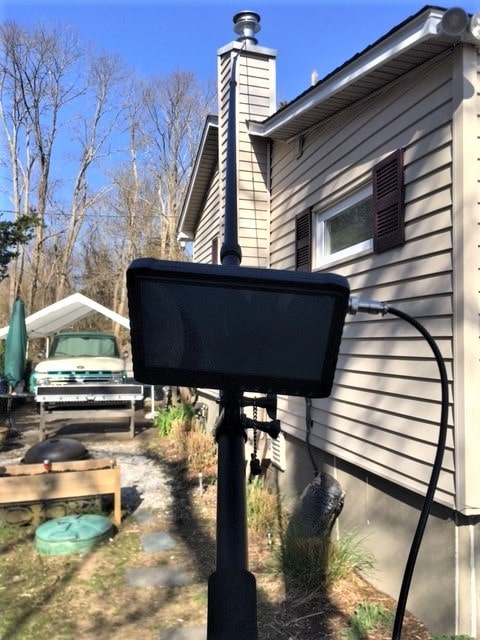
Courtesy of James Carr of Inspect & Detect Home Inspections, LLC
Pole cams can go a lot higher than you’re used to being. As such, it’s important to be aware of your surroundings and avoid hazards, like trees and wires. It’s also wise to purchase a pole cam in a non-conductive material, like fiberglass, to avoid electrocution risks.
Unlike maneuvering a drone, which involves you standing in place while the device moves, maneuvering a pole cam requires you to walk around so that it moves to where you want to look. Don’t move blindly. Be sure to glance up and in front of you periodically so you know where you are and where the pole is in relation to the property and other potential obstacles.
“You have to be very mindful of where you’re walking and what the surface is. Is it flat? Are there rocks?” Escamilla said. “You have to be aware of your surroundings.”
Lastly, invest in a pole cam that’s tall enough to meet your needs without tempting fate on a ladder. Ladders and pole cams don’t mix. If you can’t see the roof with your pole cam from the ground, find another tool or explain why you were unable to examine the roof in your report.
Take lots of photos and review them offsite.
For Escamilla, it’s just as important to observe the roof with the pole cam while you’re there as it is to review the photos it took when you’re writing the report. He suggests taking the time to zoom into images later to potentially catch and report additional items.
“Very frequently, when I take the photos off of either the pole or the drone, I’ll find things that I wouldn’t have normally seen on the screen when you’re on site,” Escamilla said. “That’s why I always tell my [inspectors] to take a boatload of pictures. I can always delete a picture that I don’t need. I can’t make one up.”
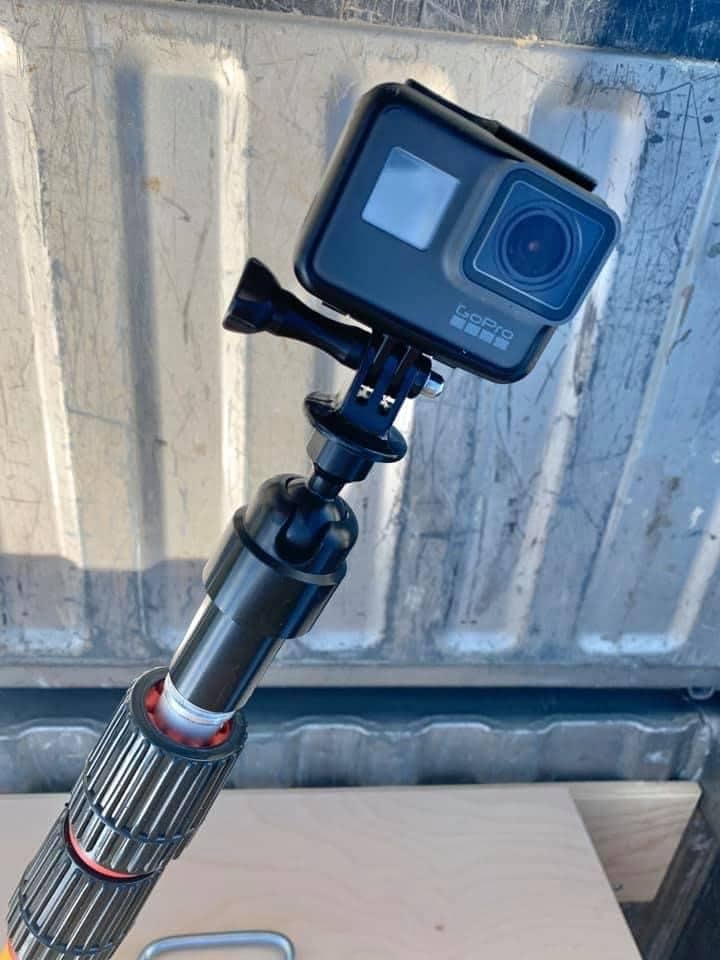
Courtesy of Tony Escamilla of Villa Home Inspections
Carry equipment coverage.
Formally known as inland marine coverage or a commercial property floater, equipment coverage insures your inspection tools and equipment. Unlike standard property insurance, inland marine coverage protects your tools and equipment regardless of their location. This is important in the home inspection industry since, rather than housing your tools and equipment in an office, you usually have your materials in your work vehicle or on inspection sites.
Through InspectorPro with the ASHI Advantage, ASHI members can get up to $20,000 in equipment coverage for just $200 per year. To learn more about inland marine coverage, click here. Current clients can request equipment coverage by contacting their InspectorPro brokers. Prospective clients can apply for insurance here.
Pole Cams for Home Inspectors
Are you looking for a way to inspect inaccessible or unsafe roofs? Think adding another tool to your belt could help you offer your clients more information? Consider using a pole cam.



